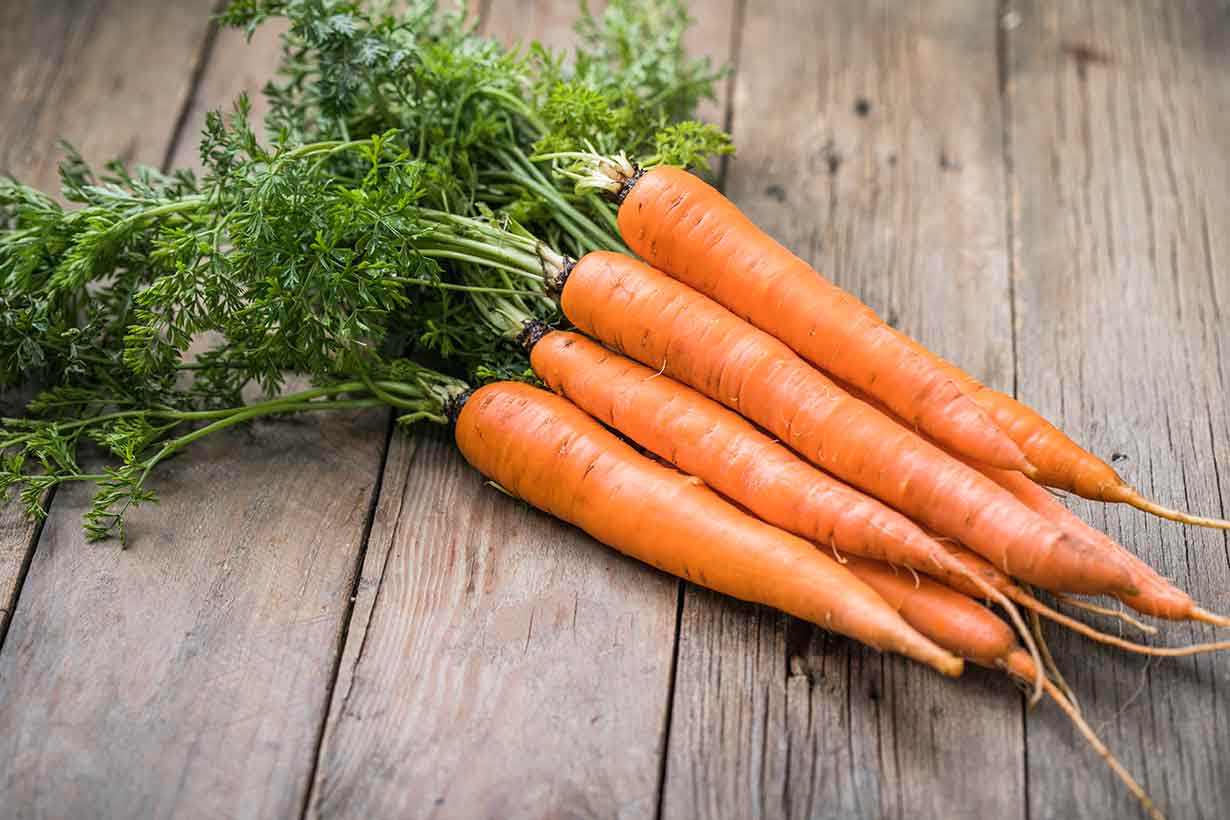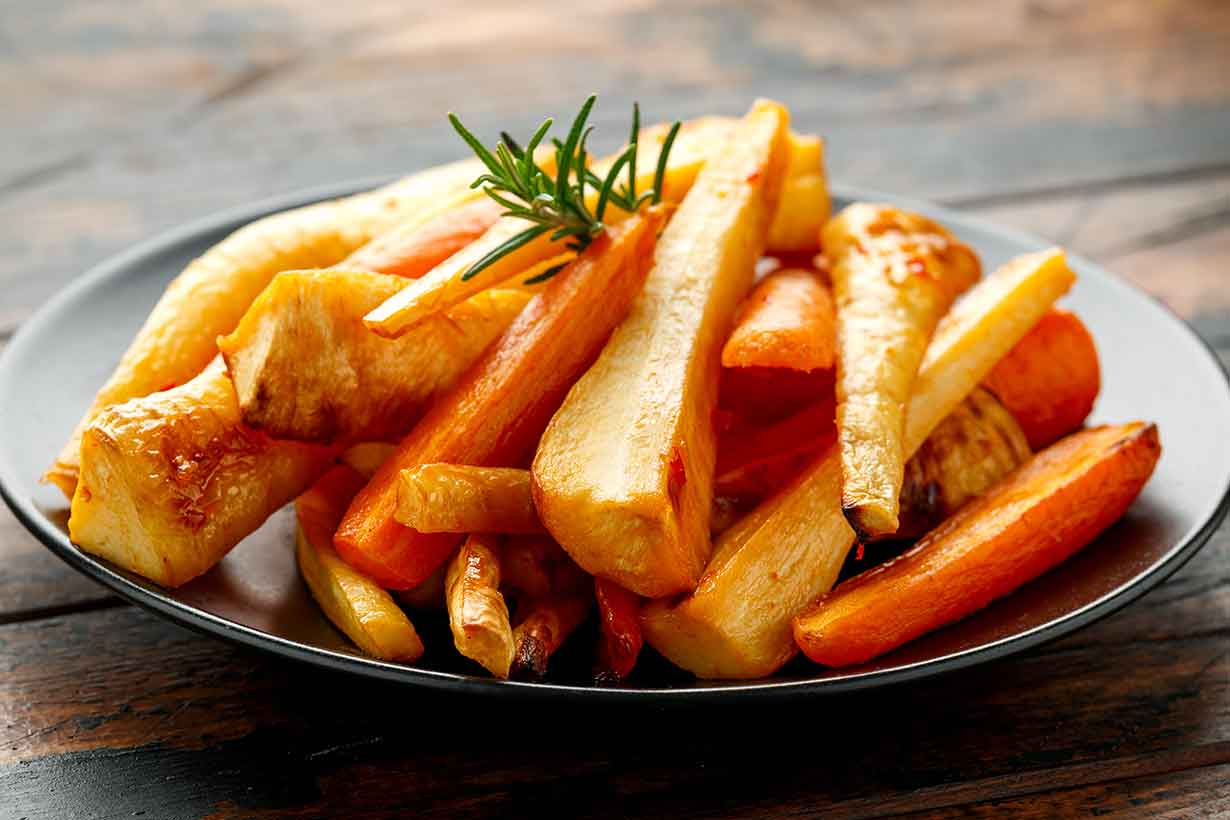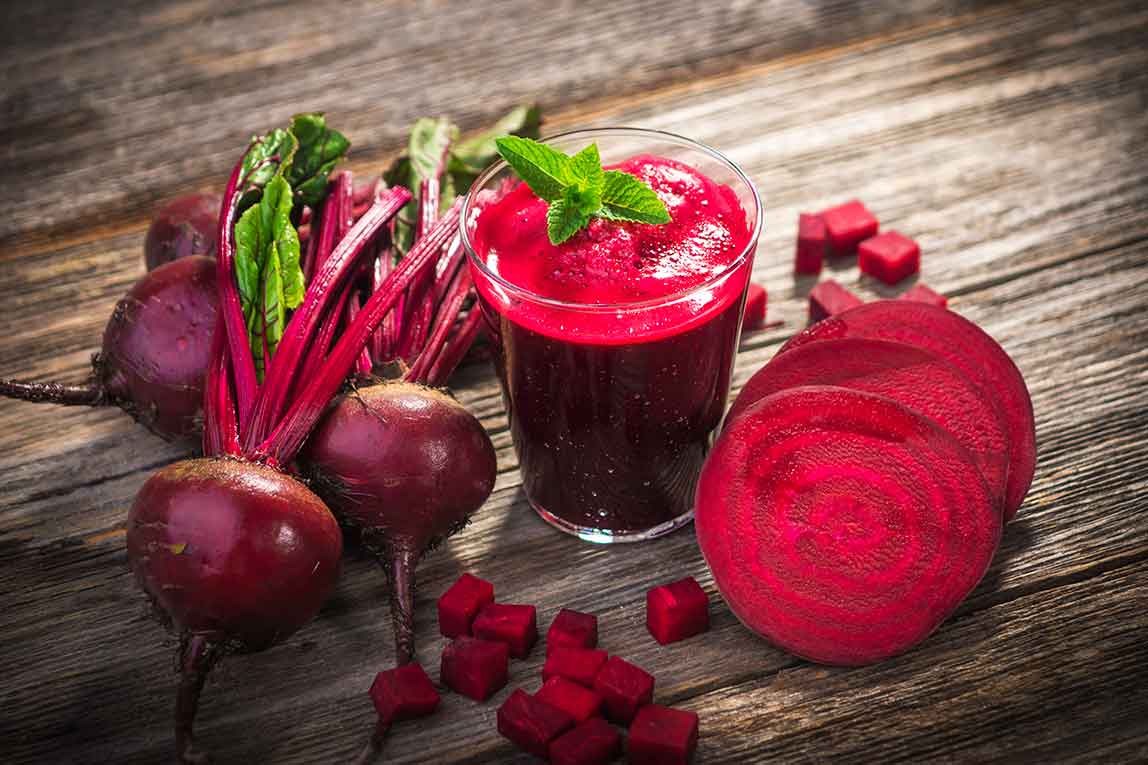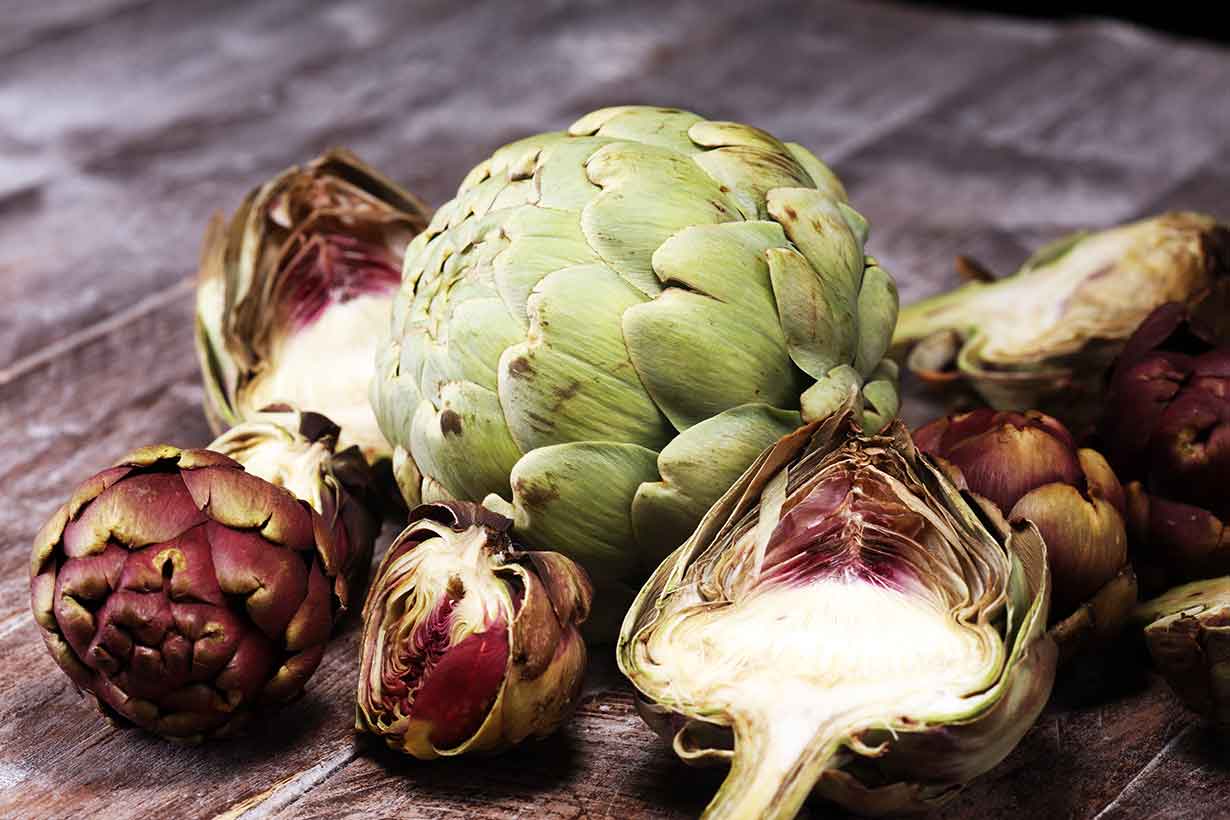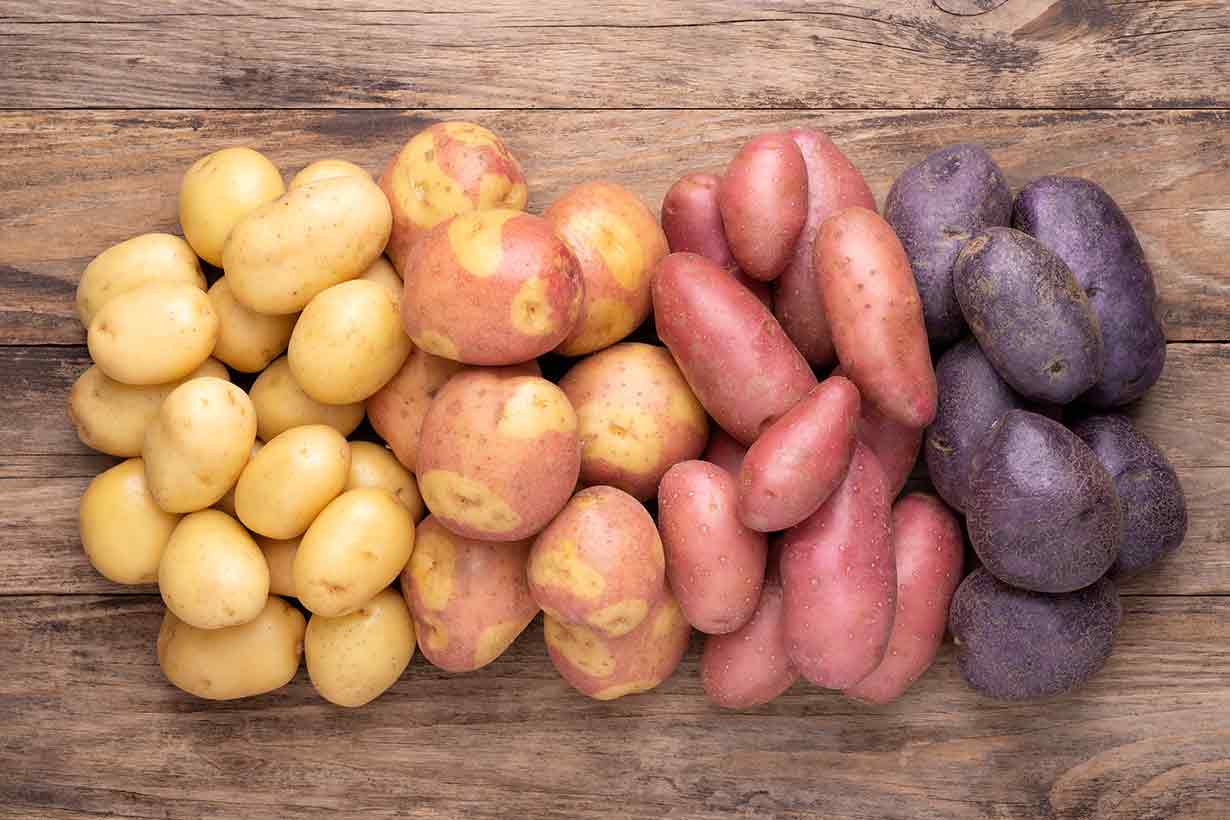Root vegetables are edible vegetables that grow underground.
Some famous examples of roots include carrots, parsnips, and turnips.
Root vegetables offer a broad range of essential vitamins and minerals and excellent cooking versatility.
This article lists seventeen healthy root vegetables alongside their picture, key nutrients, and general benefits.
The source of all nutritional data is the USDA’s FoodData Central database. Daily values have been calculated using the FDA’s published daily values.
1) Beets
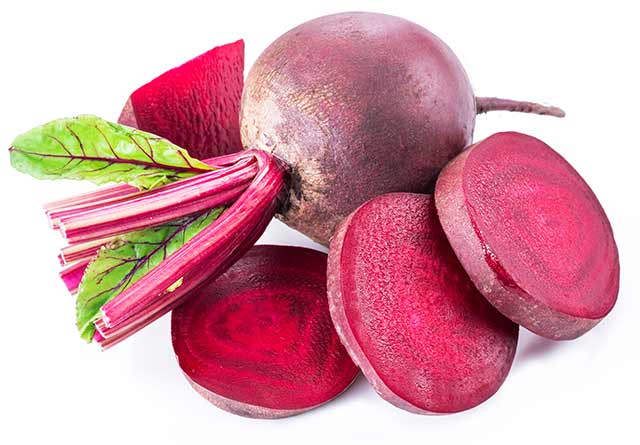
Beets are a distinctive reddish-purple color and contain many interesting compounds.
For one thing, beets have a significant concentration of nitrate, which research shows can help to lower blood pressure and improve exercise performance. In this regard, beetroot juice is a popular sports supplement (1, 2, 3).
To see more information on this, here is a guide to the benefits of beets.
Interestingly, while most of us consider beets red, some varieties have different colors. For instance, golden beets have a significantly different color due to the pigments they contain, such as vulgaxanthins (4).
Per two cooked beets (100g), beets have the following key nutrients (5):
- Calories: 44 kcal
- Carbohydrate: 9.96 g
- Fiber: 2.0 g
- Sugars: 7.96 g
- Fat: 0.18 g
- Protein: 1.68 g
- Folate: 80 mcg (20% of the daily value)
- Manganese: 0.33 mg (14% DV)
- Copper: 0.07 mg (8% DV)
- Potassium: 305 mg (6% DV)
- Magnesium: 23 mg (5% DV)
As shown above, beets are relatively low in calories and contain a small to moderate amount of carbohydrates.
Beets are also an excellent source of folate.
2) Carrots
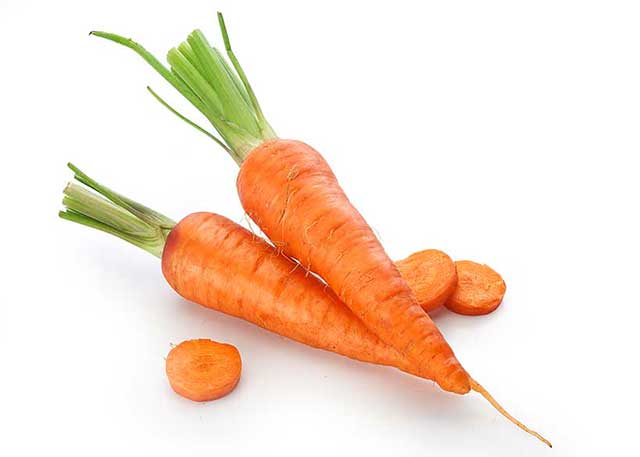
Carrots are typically an orange root vegetable, and they are exceptionally high in vitamin A carotenoids.
These carotenoids include the antioxidants lutein and zeaxanthin. Clinical trials show these compounds may help protect against age-related ocular diseases (6).
However, not all carrots are orange, and they come in various colors, including white, red, purple, and even black (7).
Here are the key nutrients that these healthy root vegetables offer per regular 60-gram carrot (8):
- Calories: 26 kcal
- Carbohydrate: 5.97 g
- Fiber: 1.74 g
- Sugars: 2.95 g
- Fat: 0.15 g
- Protein: 0.582 g
- Vitamin A, RAE: 494 mcg (55% DV)
- Vitamin K: 8.22 mcg (7% DV)
- Vitamin B6: 0.12 mg (7% DV)
- Vitamin E: 0.80 mg (5% DV)
- Potassium: 183.30 mg (4% DV)
While the cartoon-esque idea of carrots giving us perfect night vision is slightly exaggerated, their significant carotenoid content is an excellent reason to eat them.
3) Daikon Radish
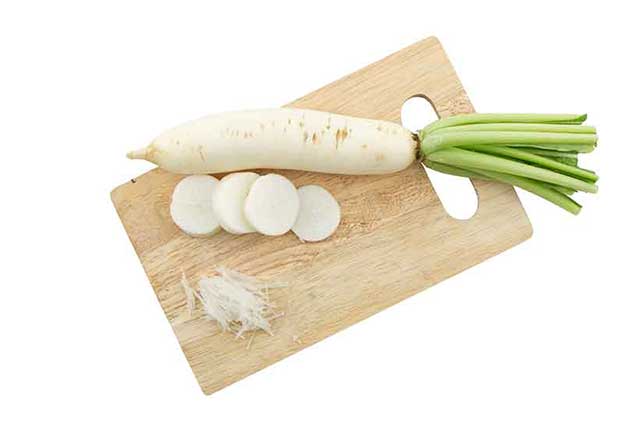
Daikon radish is a prevalent type of root vegetable in East Asia, and it is a staple food in Korean and Japanese cuisine.
Despite this, the origins of daikon radish lie in the Mediterranean region, and it is available in Western Europe and the United States, too (9).
Here are the primary nutrients in cooked daikon radish per 155-gram cup serving (10):
- Calories: 59 kcal
- Carbohydrate: 5.12 g
- Fiber: 2.32 g
- Sugars: 2.81 g
- Fat: 4.09 g
- Protein: 1.04 g
- Vitamin C: 22.2 mg (25% DV)
- Copper: 0.15 mg (17% DV)
- Potassium: 418.95 mg (9% DV)
- Folate: 24.99 mcg (6% DV)
- Phosphorus: 35.28 mg (3% DV)
Daikon radish is low in calories, carbohydrates, and most other nutrients.
However, it provides a reasonably high amount of vitamin C and copper.
Many recipes involve fermented daikon radish, it is a common ingredient in kimchi.
For a complete guide to daikon radish and its nutritional benefits, refer to this guide:
5 Benefits of Daikon Radish (and Full Nutritional Values)
4) Lotus Root
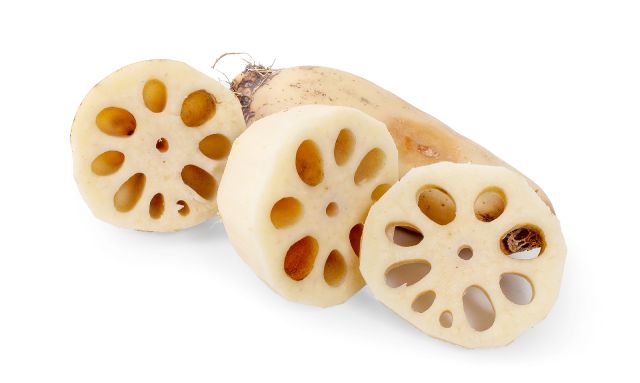
Lotus root is another root vegetable that enjoys popularity in East Asia.
This interesting root has a crunchy texture that slightly softens with a longer cooking time and a mildly sweet taste.
It works well for various culinary uses, and it can be used in soups and stews, boiled, steamed, or even stir-fried.
The key nutrients per 125-gram cup of cooked lotus root are as follows (11):
- Calories: 109 kcal
- Carbohydrate: 19.4 g
- Fiber: 3.75 g
- Sugars: 0.61 g
- Fat: 3.26 g
- Protein: 1.92 g
- Vitamin C: 27.40 mg (30% DV)
- Copper: 0.22 mg (24% DV)
- Vitamin B6: 0.22 mg (13% DV)
- Manganese: 0.22 mg (10% DV)
- Potassium: 363 mg (8% DV)
As we can see, lotus root offers a good amount of fiber and is high in vitamin C and copper.
See this complete guide to the nutrition benefits of lotus root for more information.
5) Garlic
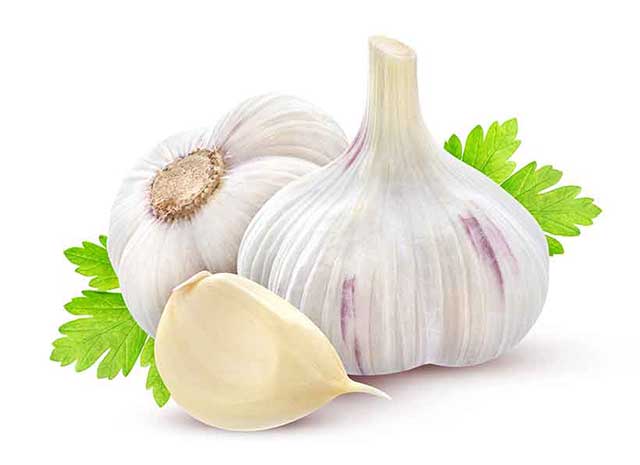
Garlic is a delicious bulb vegetable that belongs to the allium family, which also includes onions and chives.
This small and flavorful vegetable helps to make almost anything taste better too.
Garlic also plays a prominent role in world cuisine, from its use in everything from curries and pasta to garlic bread, kimchi, and even garlic snails.
Here are the main nutrients in cooked garlic per 3.5 ounces (100 grams) (12):
- Calories: 142 kcal
- Carbohydrate: 28.0 g
- Fiber: 2.7 g
- Sugars: 0.99 g
- Fat: 0.38 g
- Protein: 6.58 g
- Vitamin B6: 1.24 mg (73% DV)
- Manganese: 1.67 mg (73% DV)
- Vitamin C: 31.20 mg (35% DV)
- Selenium: 14.20 mcg (26% DV)
- Calcium: 181 mg (14% DV)
As shown, garlic offers relatively levels of vitamins and minerals gram-for-gram compared to other healthy root vegetables.
Garlic may also have some health benefits. For example, a 2015 meta-analysis and systematic review of randomized controlled trials found that garlic can significantly lower blood pressure (13).
6) Red Onion
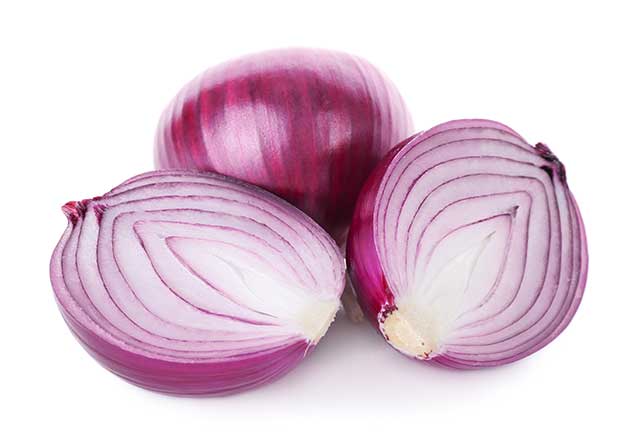
While not as popular as their yellow cousin, red onions are a tasty underground bulb.
Red onions are delicious when sauteed as a side vegetable, and they are a common ingredient in salads, in which their peppery taste works well.
Here is a look at their primary nutrients per 197-gram red onion (14):
- Calories: 87 kcal
- Carbohydrate: 19.6 g
- Fiber: 7.82 g
- Sugars: 11.3 g
- Fat: 0.20 g
- Protein: 1.85 g
- Copper: 0.114 g (13% DV)
- Manganese: 0.234 mg (10% DV)
- Potassium: 388 mg (8% DV)
- Phosphorus: 80.8 mg (6% DV)
- Magnesium: 22.5 mg (5% DV)
As shown in the nutrient profile, red onions are not a significant source of vitamins and minerals besides a moderate amount of vitamin C.
However, red onions also provide a large concentration of phytonutrients, including quercetin, a type of polyphenol thought to have health benefits (15).
A systematic review published in 2020 found that quercetin supplementation significantly improved total and LDL cholesterol levels (16).
7) Yellow Onion
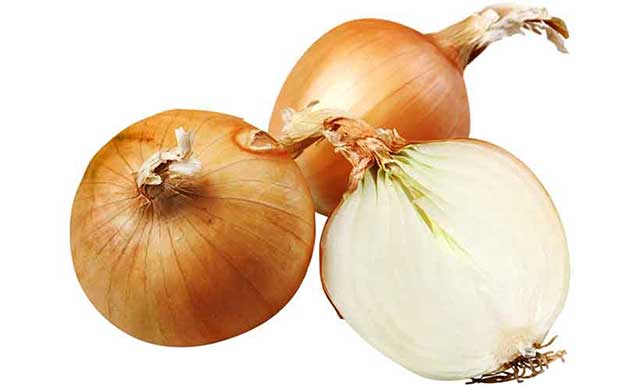
Yellow onions (or just ‘onions’) are similar to the red version, but people mainly eat them in their cooked state.
Nutritionally, cooked onions offer the following nutrients per large 128-gram onion (17):
- Calories: 44 kcal
- Carbohydrates: 10.2 g
- Fiber: 1.4 g
- Sugars: 4.73 g
- Fat: 0.19 g
- Protein: 1.36 g
- Vitamin C: 8.14 mg (9% DV)
- Vitamin B6: 0.13 mg (8% DV)
- Manganese: 0.14 mg (6% DV)
- Folate: 20.90 mg (5% DV)
- Copper: 0.04 mg (4% DV)
Onions contain a moderate amount of vitamin C.
Like red onions, they are also a significant source of quercetin.
On this note, several randomized controlled trials suggest that quercetin-rich onions may help lower cognitive decline in older adults (18, 19).
8) Jicama
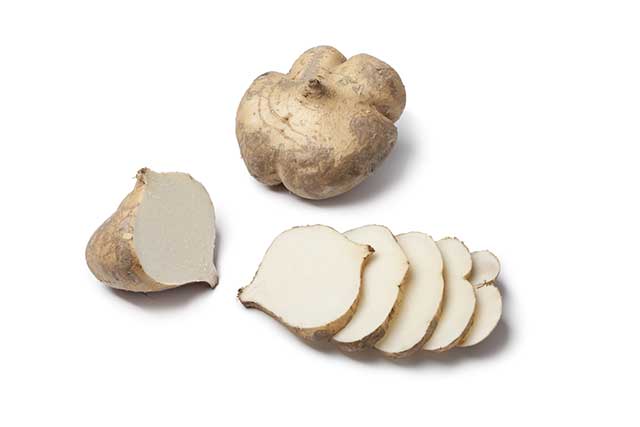
Sometimes known as the ‘Mexican yam bean’ or ‘Mexican turnip,’ jicama is an edible root that enjoys the most popularity in Mexico.
However, anyone living in the United States should be able to find this root vegetable without issue.
Per 3.5 oz (100g) serving of cooked jicama, it provides the following nutrients (20):
- Calories: 38 kcal
- Carbohydrate: 8.82 g
- Fat: 0.09 g
- Protein: 0.72 g
- Vitamin C: 14.10 mg (16% DV)
- Potassium: 135 mg (3% DV)
- Iron: 0.57 mg (3% DV)
- Manganese: 0.06 mg (3% DV)
- Magnesium: 11.0 mg (3% DV)
Jicama is very versatile, and people eat it in various ways. Like potatoes, jicama can be roasted, fried, boiled, mashed, or made into chips.
9) Parsnip
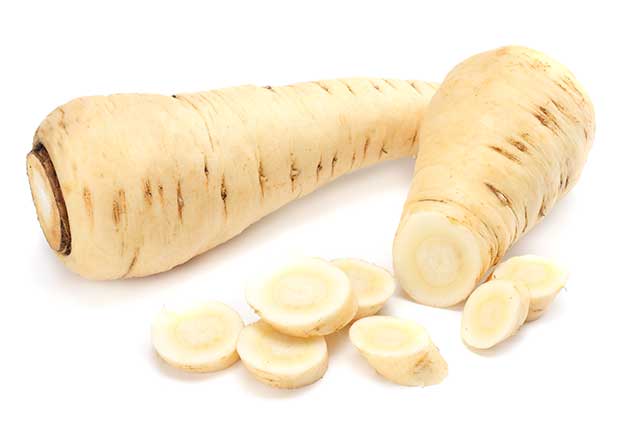
Parsnips are nutritious root vegetables and arguably one of the tastiest.
Parsnips may look like white carrots but have different nutritional properties and taste characteristics.
This creamy white root vegetable has a firm texture and a mildly caramel-like sweet and nutty flavor.
Below you can see the key nutrients in a 160-gram parsnip (21):
- Calories: 114 kcal
- Carbohydrate: 27.2 g
- Fiber: 5.76 g
- Sugars: 7.68 g
- Fat: 0.48 g
- Protein: 2.11 g
- Vitamin C: 20.8 mg (23% DV)
- Folate: 92.8 mg (23% DV)
- Copper: 0.22 mg (24% DV)
- Manganese: 0.47 mg (20% DV)
- Potassium: 587.2 mg (12% DV)
As shown above, just one parsnip provides high amounts of vitamin C, folate, copper, and several other nutrients.
Parsnips are also quite adaptable for culinary use, and we can cook them in so many ways.
Among these different uses, it is possible to make boiled, mashed, roasted, and steamed parsnips. They can also be used to make chips and soups.
10) Turnip
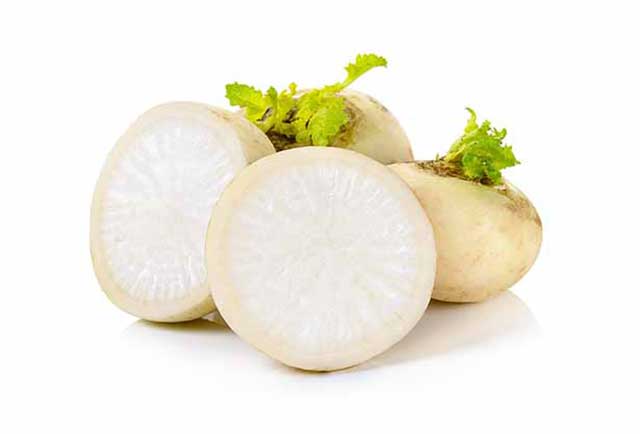
Turnips are small and round root vegetables, typically with a creamy color.
However, different varieties of turnips grow throughout the world, and some have a purple pigment.
A 230-gram cup of mashed turnip provides the following nutrients (22):
- Calories: 51 kcal
- Carbohydrate: 11.6 g
- Fiber: 4.6 g
- Sugars: 6.88 g
- Fat: 0.18 g
- Protein: 1.63 g
- Vitamin C: 26.68 mg (30% DV)
- Potassium: 407.10 mg (9% DV)
- Vitamin B6: 0.15 mg (9% DV)
- Manganese: 0.16 mg (7% DV)
- Folate: 20.70 mcg (5% DV)
Turnips provide a good amount of dietary fiber; their most concentrated vitamin or mineral is vitamin C.
Interestingly, the taste of turnips can vary significantly between bitter and very mildly sweet, depending on when they are harvested. It is thought that leaving them in the ground too long increases this bitterness.
A longer compared to a shorter cooking time will remove more of these bitter notes.
11) Burdock Root
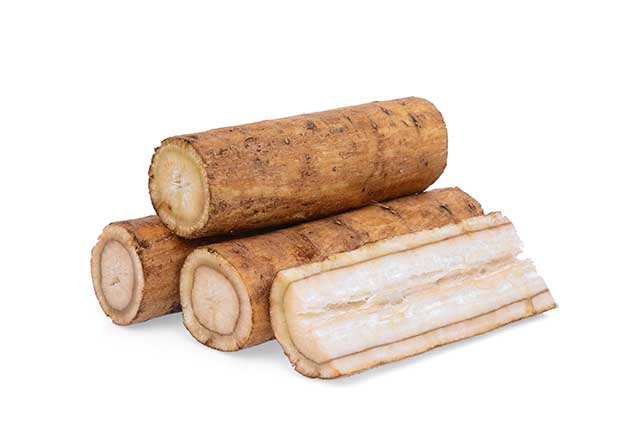
Burdock root is a lesser-known type of root that grows throughout North Asia and Europe.
In addition to its use as a vegetable, it is also possible to buy burdock root tea products with a mild earthy flavor.
Cooked burdock root provides the following nutrients per 100 grams (23):
- Calories: 110 kcal
- Carbohydrate: 26.5 g
- Fiber: 2.25 g
- Sugars: 4.44 g
- Fat: 0.18 g
- Protein: 2.61 g
- Manganese: 0.34 mg (15% DV)
- Vitamin B6: 0.35 mg (21% DV)
- Potassium: 450.0 mg (10% DV)
- Phosphorus: 116.25 mg (9% DV)
- Magnesium: 48.75 mg (12% DV)
Burdock root tastes slightly sweet and has a firm, crunchy texture.
Additionally, this root contains a substantial amount of hydroxycinnamic acid, a type of polyphenol also found in cinnamon and coffee (24).
12) Radish
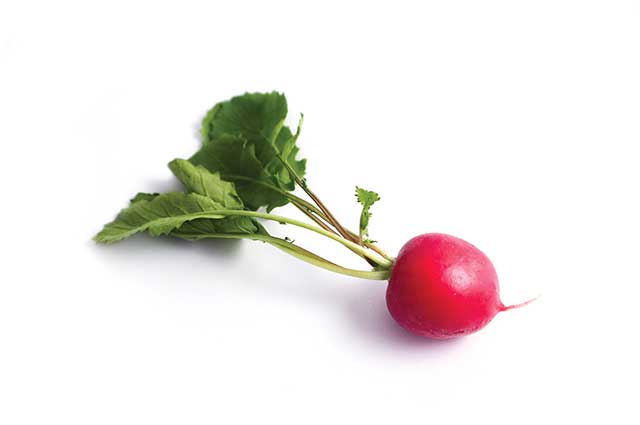
In contrast to the East-Asian daikon radish, the common radish comes in colorful shades of red, pink, and purple.
Radishes have a spicy and peppery taste, which comes from the chemical compounds they contain, such as glucosinolate and isothiocyanate (25).
Here are the key nutrients in radishes per 116-gram cup (26):
- Calories: 19 kcal
- Carbohydrate: 3.94 g
- Fiber: 1.86 g
- Sugars: 2.16 g
- Fat: 0.12 g
- Protein: 0.79 g
- Vitamin C: 17.17 mg (19% DV)
- Folate: 29.0 mcg (7% DV)
- Copper: 0.06 mg (7% DV)
- Potassium: 270.28 mg (6% DV)
- Manganese: 0.08 mg (3% DV)
Containing a moderate amount of vitamin C, radishes are a very low-energy root vegetable, and they make a spicy and flavorful addition to salads.
13) Sweet Potato
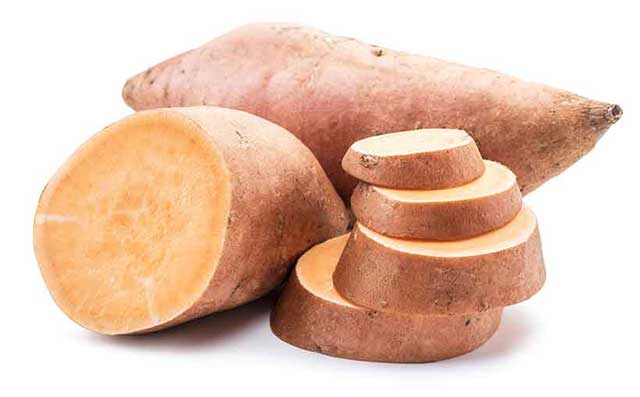
Sweet potatoes are an underground tuber with a mildly sweet taste and one of the most versatile vegetables.
Whether it is boiling, frying, mashing, roasting, or steaming, there are many ways to prepare sweet potatoes.
Here are the key nutrients in a large 180-gram cooked sweet potato (27):
- Calories: 162 kcal
- Carbohydrate: 37.3 g
- Fiber: 5.94 g
- Sugars: 11.7 g
- Fat: 0.27 g
- Protein: 3.62 g
- Vitamin A, RAE: 1730 mcg (192% DV)
- Vitamin C: 39.20 mg (44% DV)
- Manganese: 0.99 mg (43% DV)
- Copper: 0.32 mg (36% DV)
- Potassium: 950 mg (20% DV)
Like carrots, sweet potatoes are a significant source of carotenoids, giving sweet potatoes a large amount of vitamin A retinol equivalents.
Since these compounds are fat-soluble vitamin A precursors, eating them with a source of fat is a good idea to increase their absorption (28).
For more information, see this guide to the nutrition benefits of sweet potatoes.
Additionally, purple sweet potatoes have a unique nutritional profile.
14) Shallot
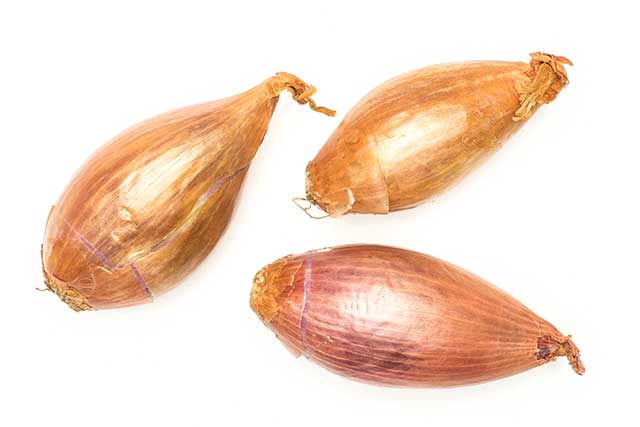
Like their allium family members, onions and garlic, shallots are an underground edible bulb.
However, they are much more flavorful, and chefs worldwide prize them for their rich and mildly sweet taste.
Based on their raw weight, a 3.5 oz (100-gram) serving of shallots provides the following nutrients (29):
- Calories: 72 kcal
- Carbohydrate: 16.8 g
- Fiber: 3.2 g
- Sugars: 7.87 g
- Fat: 0.1 g
- Protein: 2.5 g
- Vitamin B6: 0.35 mg (21% DV)
- Manganese: 0.29 mg (13% DV)
- Copper: 0.09 mg (10% DV)
- Vitamin C: 8 mg (9% DV)
- Folate: 34.0 mcg (9% DV)
Just as shallots are rich in flavor, they are also nutrient-rich. Shallots provide a good source of fiber and contain moderately high amounts of vitamin B6, manganese, and copper.
See this complete guide to shallots for more information.
15) Rutabaga
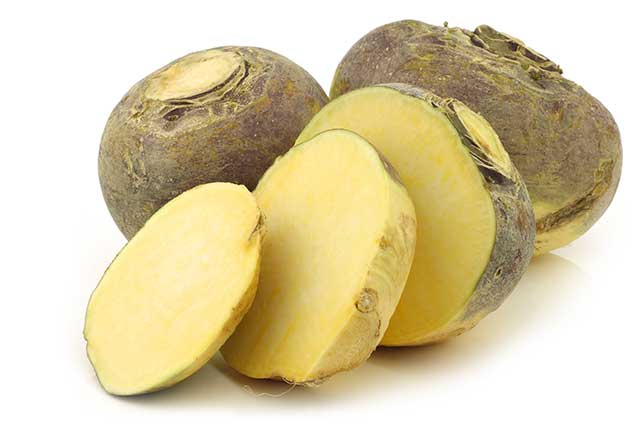
Rutabaga is a turnip-like root vegetable that also goes by the common name of swede.
Interestingly, rutabaga is thought to be a hybrid of turnips and cabbages, with a Swiss botanist first mentioning it in the year 1620 (30).
Although rutabaga and turnip share some similarities, rutabaga has a sweeter and milder flavor.
Here are the nutrients you’ll find in a 240-gram cup of mashed rutabaga (31):
- Calories: 72 kcal
- Carbohydrate: 16.4 g
- Fiber: 4.32 g
- Sugars: 9.48 g
- Fat: 0.43 g
- Protein: 2.23 g
- Vitamin C: 45.12 mg (50% DV)
- Thiamin (B1): 0.20 mg (17% DV)
- Vitamin B6: 0.24 mg (14% DV)
- Potassium: 518.40 mg (11% DV)
- Manganese: 0.23 mg (10% DV)
As we can see, rutabaga is a rich vitamin C source, providing several other vitamins and minerals in high amounts.
There are several ways to cook a rutabaga, but here are two of the tastiest;
- Chop the rutabaga into cubes and evenly coat them with olive oil, salt, pepper, and garlic powder. Then roast in the oven until they’re ready.
- Boil the rutabaga until it becomes soft, then mash and mix with olive oil and salt.
16) Cassava Root
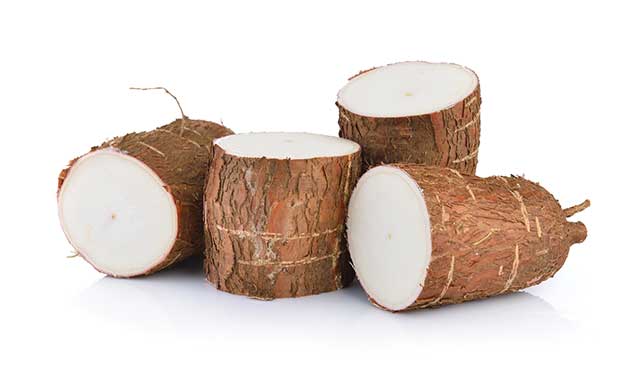
Cassava is a root vegetable that grows in tropical and subtropical areas (32, 33).
The root is known as Brazilian arrowroot, and—more famously—it is used to make tapioca.
Nutritionally, it is relatively high in calories and carbohydrates compared to other root vegetables.
Per 160-gram cup of cooked cassava, it provides the following nutrients (34):
- Calories: 306 kcal
- Carbohydrate: 63.4 g
- Fiber: 3.04 g
- Sugars: 2.85 g
- Fat: 4.85 g
- Protein: 2.27 g
- Vitamin C: 84.05 mg (93% DV)
- Copper: 0.41 mg (46% DV)
- Thiamin (B1): 0.35 mg (29% DV)
- Folate: 110.16 mcg (28% DV)
- Potassium: 1105.68 mg (24% DV)
As the vitamin and mineral content shows, cassava root is a significant source of numerous micronutrients.
However, there is a strong downside to be aware of about cassava root. In its raw state, cassava contains enzymes that break down into cyanide (35).
Unfortunately, numerous fatalities have occurred from people eating this root vegetable raw. Sadly, some of these deaths have come from people unknowingly eating raw cassava meal (36, 37).
Cassava always needs to be cooked thoroughly.
17) Ginger
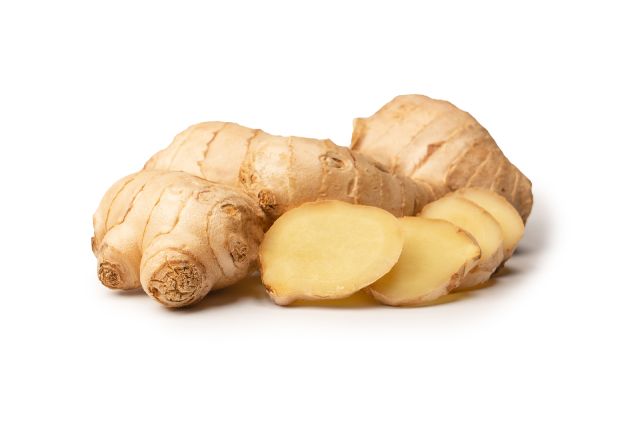
Ginger root has a unique appearance and a very distinctive flavor.
The root is often used as a spice, adding warm, slightly spicy, and earthy notes to food.
Here are the basic nutritional values of ginger per five slices (11g) (38):
- Calories: 80 kcal
- Carbohydrate: 17.8 g
- Fiber: 2.0 g
- Sugars: 1.7 g
- Fat: 0.75 g
- Protein: 1.82 g
Since people use ginger in small amounts, it is an insignificant source of vitamins and minerals.
However, it contains moderately high levels of copper, magnesium, manganese, and potassium on a gram-for-gram basis.
Ginger has a long history of use as a medicinal ingredient across different cultures, and the first mentions of ginger date back 3000 years (39).
Ginger contains various bioactive compounds, such as gingerol and zingerone, that may provide health benefits. A systematic review of 109 randomized controlled trials on ginger found that it may lower inflammation and improve metabolic syndrome and digestive function (40).
However, the researchers noted that only 43 of these trials provided ‘high-quality evidence’ and that more research is necessary.
Final Thoughts
Root vegetables may not be as nutrient-rich as vegetables like leafy greens, but they are a different type of food that provides more energy. That said, root vegetables do still provide numerous beneficial nutrients.
Most root vegetables also taste great; they are delicious roasted, add various flavors to meals, and are versatile enough to be used in several ways.
Adding some healthy root vegetables to the diet is an excellent way to get more fiber and increase your intake of vitamins and minerals.
For more on vegetables, see this guide to the nutritional values of potatoes.

